A business has a set of processes in place that are executed to achieve an end result, which usually includes delivering a product or service and providing customer service. Anything that involves a set of inputs, a transformation procedure, and a set of outputs is considered a process. Based on that definition alone, it’s easy to see just how many processes are involved even in the simplest of business. Every step involved is considered a process, no matter how simple or complicated it may be. Managing all processes without automated help is overwhelming. This calls for the help of business process management software.
The main function of business process management is to improve how your business does what it does. Practically all business owners focused on the output, but there are quite a number who fail to give more attention to the processes involved in achieving the desired results. Thus, the potential to have more savings by improving the efficiency of the procedures are often not realized. Usually, problems with the resulting product or service can be traced to a step that went wrong in the process. With the right business process management software, you have the capability to zero in on the tiniest deviation which can lead to a less-than-perfect result. Once you know what the problem is, you can work on eliminating it and putting the necessary improvements in place. The more you use the tools provided by the software, the more problems you eliminate until you have nothing left, and all you have to do is focus your time and attention on providing innovations in your business that make a significant difference in savings and quality.
So how important is process management in your business? Apparently it’s very important. Methodologies dedicated to improving end-to-end process management provide major companies billions of dollars in savings. One prime example is Motorola and its US$17 billion in savings in 2005. This multinational communications company attributes its impressive savings to Six Sigma, a methodology that aims to improve profitability by removing defects in end-to-end processes.
Key Features of BPM Software
- Process Mapping and Modeling: BPM software allows users to create visual representations of processes. This feature helps in identifying bottlenecks, redundancies, and inefficiencies, enabling teams to redesign processes for better performance.
- Workflow Automation: By automating repetitive tasks, BPM software reduces the potential for human error and speeds up processes. Automation ensures that tasks are executed consistently and frees up employees to focus on more strategic activities.
- Integration Capabilities: Effective BPM software can integrate with existing systems and applications, such as Customer Relationship Management (CRM) and Enterprise Resource Planning (ERP) systems. This interoperability ensures that data flows seamlessly across different platforms, enhancing collaboration and information sharing.
- Real-time Monitoring and Analytics: BPM solutions often come with dashboards and reporting tools that provide real-time insights into process performance. This data enables organizations to make informed decisions, track Key Performance Indicators (KPIs), and identify areas for improvement.
- Collaboration Tools: BPM software facilitates communication and collaboration among team members. Features such as shared workspaces, task assignments, and comment threads ensure that everyone is aligned and informed throughout the process.
- Compliance and Risk Management: Many BPM solutions include features to help organizations comply with regulatory requirements. By standardizing processes and documenting workflows, businesses can mitigate risks and ensure accountability.
Benefits of Using BPM Software
- Enhanced Efficiency: By streamlining processes and automating tasks, BPM software helps organizations reduce cycle times and increase output. This leads to cost savings and improved profitability.
- Improved Agility: In today’s fast-paced business environment, agility is crucial. BPM software enables organizations to adapt quickly to market changes and customer demands by facilitating rapid process adjustments.
- Greater Transparency: BPM tools provide visibility into processes, allowing organizations to monitor progress and identify issues as they arise. This transparency fosters accountability and drives continuous improvement.
- Better Customer Experience: By optimizing processes, businesses can respond more quickly and effectively to customer needs. This leads to enhanced customer satisfaction and loyalty, which are vital for long-term success.
- Data-Driven Decision Making: The analytics capabilities of BPM software allow organizations to leverage data for strategic decision-making. By analyzing process performance and outcomes, businesses can identify trends, forecast needs, and optimize resource allocation.
Choosing the Right BPM Software
When selecting a BPM solution, organizations should consider several factors:
- Scalability: The software should be able to grow with the organization and handle increasing process complexity.
- User-Friendliness: A user-friendly interface is essential for ensuring that employees can easily adopt and utilize the software.
- Customization: Look for solutions that can be tailored to fit specific business needs and processes.
- Vendor Support: Reliable support and training from the vendor can greatly enhance the successful implementation and ongoing use of the software.
Good business process management software working with a suitable database systems design and an efficient database management leads only to the best your business can be. Different software applications working together in a paperless environment eliminates a big part of mundane mistakes and allows you to spend more time on what really matters-finding ways to improve your already successful business.
COMIDOR
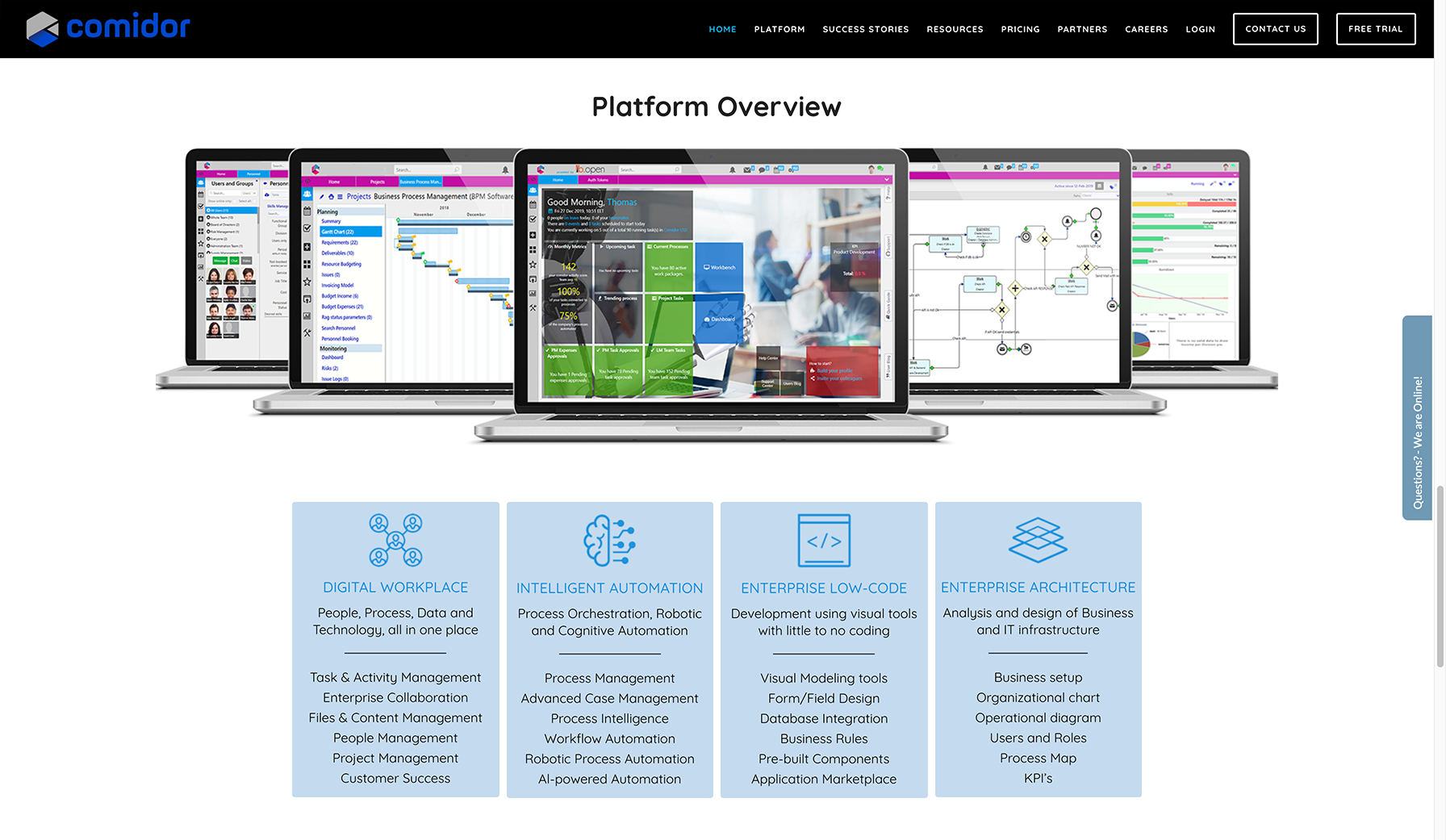
Comidor Platform enables businesses to achieve continuous growth and improvement through evidence-based, agile, digital transformation and automation.
Comidor accelerates your digital transformation and automation journey with:
- Intelligent Automation
- Enterprise Low-Code
- Enterprise Architecture
- Digital Workplace
PROCESSMAKER
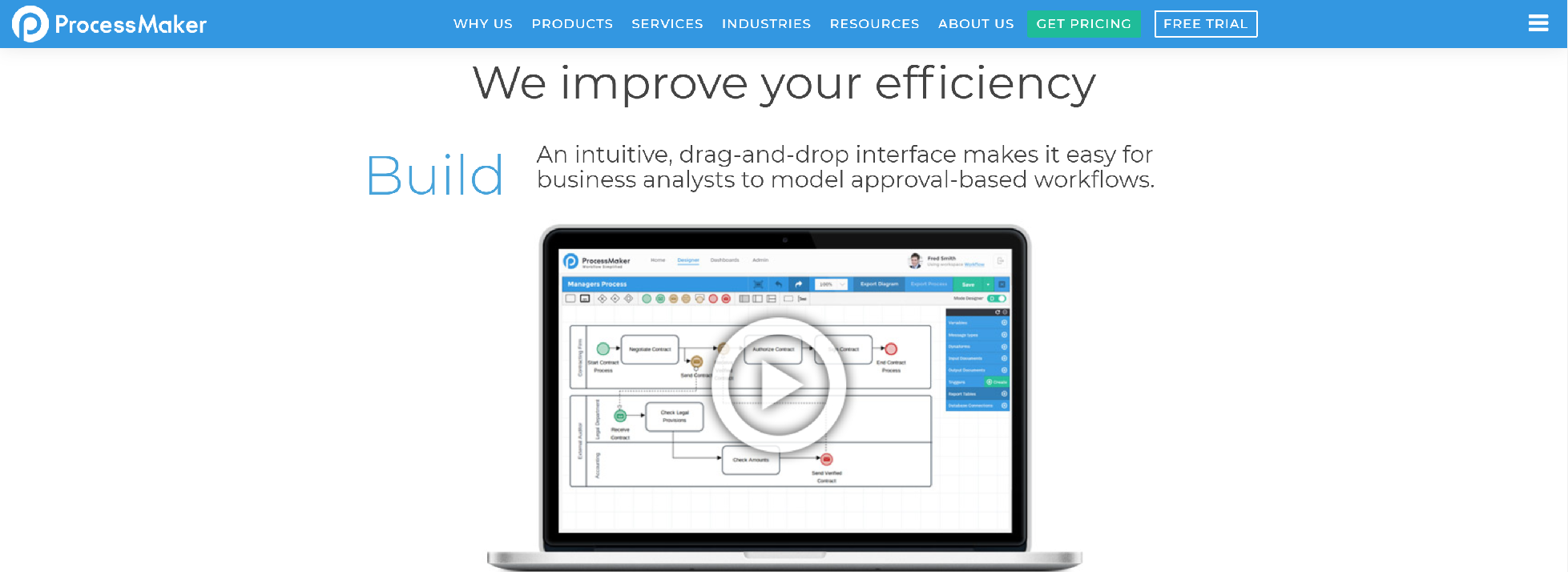
ProcessMaker is an easy to use BPM and workflow software solution. It is used to design, automate, and deploy business processes of any kind.
- Enterprise Ready Business Process Management
- Low Code Workflow Software
- Get More from your Legacy Software Applications
PROCESS
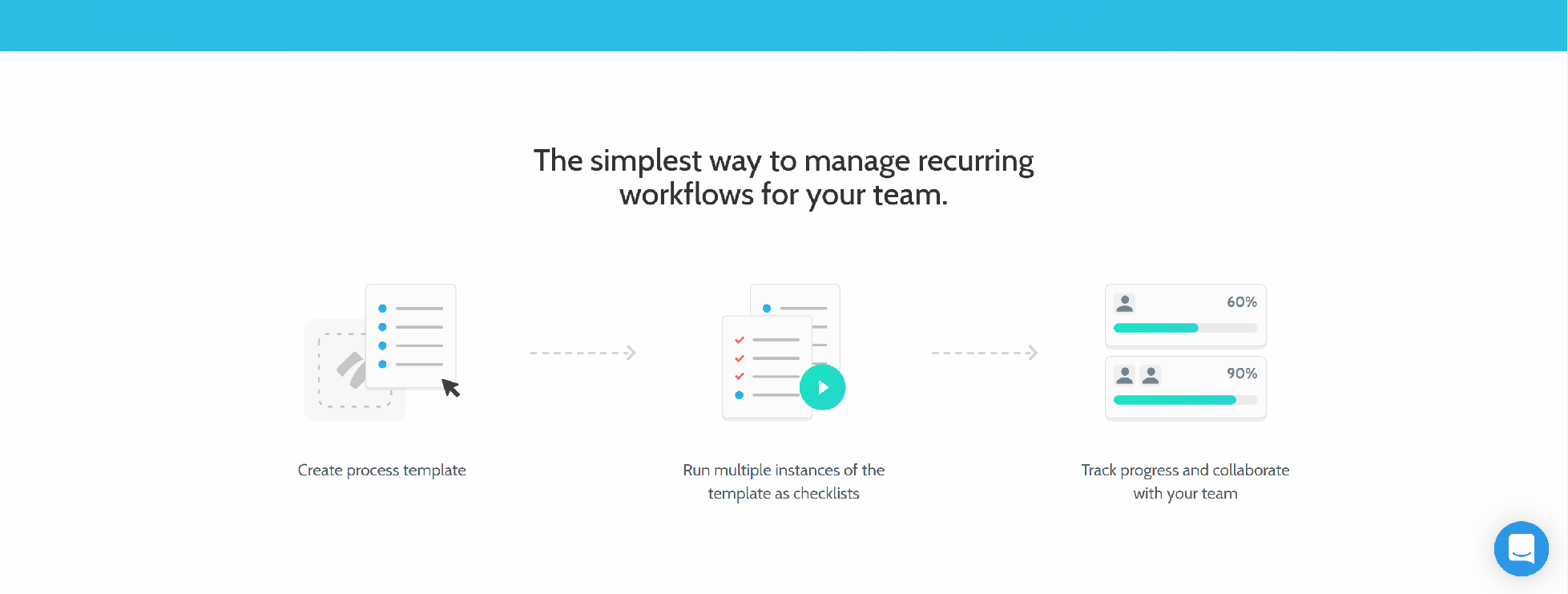
Simple workflow software for businesses. Create recurring checklists, workflows and standard operating procedures in seconds.
- Create procedure documents in seconds
- Run processes as collaborative workflows
- Integrate with over 1000+ apps to automate tasks
- Use Forms to Capture Structured Data
KISSFLOW

KiSSFLOW is a workflow tool & business process workflow management software to automate your workflow process. Rated #1 cloud workflow software in Google Apps Marketplace.
Features:
- No Coding Necessary
- Easy-to-Use Interface
- Integration-Friendly
- Built for Scalability
- Real-Time Analytics
PNMSOFT
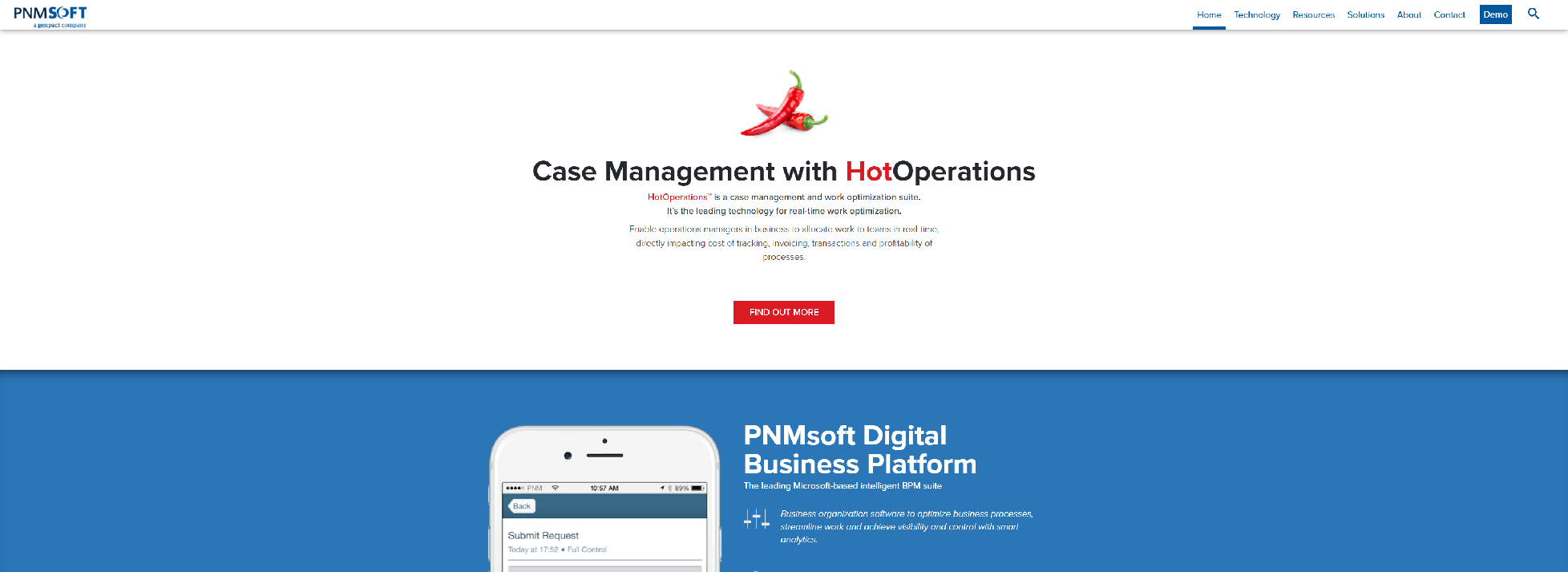
PNMsoft’s Business Process Management (BPM) software creates opportunities to transform business processes and optimize work management.
- Case Management
- Digitized Process
- Business Transformation
- Intelligent Business Operations
- Continuous Improvement
- Model-driven Composition
INTEGRIFY

Workflow software is what we do. We provide cloud-based software to help companies manage requests, automate processes and streamline workflow.
- A business process automation builder that is used to automate tasks in a process.
- An advanced, dynamic form designer with field logic and calculations.
- A scalable process engine that triggers and manages tasks efficiently.
- Reporting tools for monitoring and auditing all activities.
TALLYFY
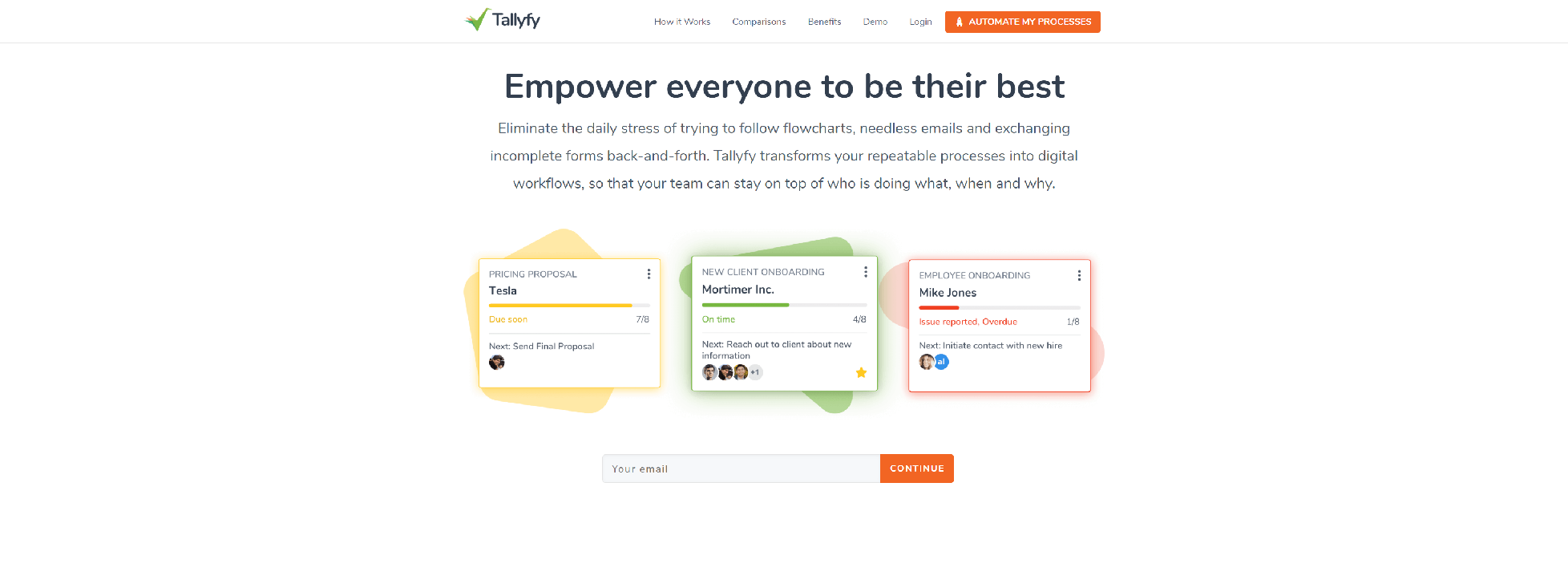
Tallyfy is beautiful workflow software and a business process workflow management tool which automates and improve your workflows. Cloud workflow software frees you from busywork.
- Client Onboarding
- Employee Onboarding
- Content Approval
- Daily/Weekly Tasks
- Product Design
- Website Updates
- Social Media Publishing
- Issue Tracking
- Partner Onboarding
- Expense Claims
- Vacation Requests
- Lead Qualification
- Plan Regular Events
- Weekly/Monthly Reporting
- Service Requests
- Approve Client Proposals
HIGHGEAR

HighGear is the leading, intuitive no-code workflow automation platform for business analysts to rapidly build enterprise-grade workflow applications.
- Visual Workflow
- Drag-and-Drop Forms
- Easy to Use
- Easy to Deploy
BONITASOFT
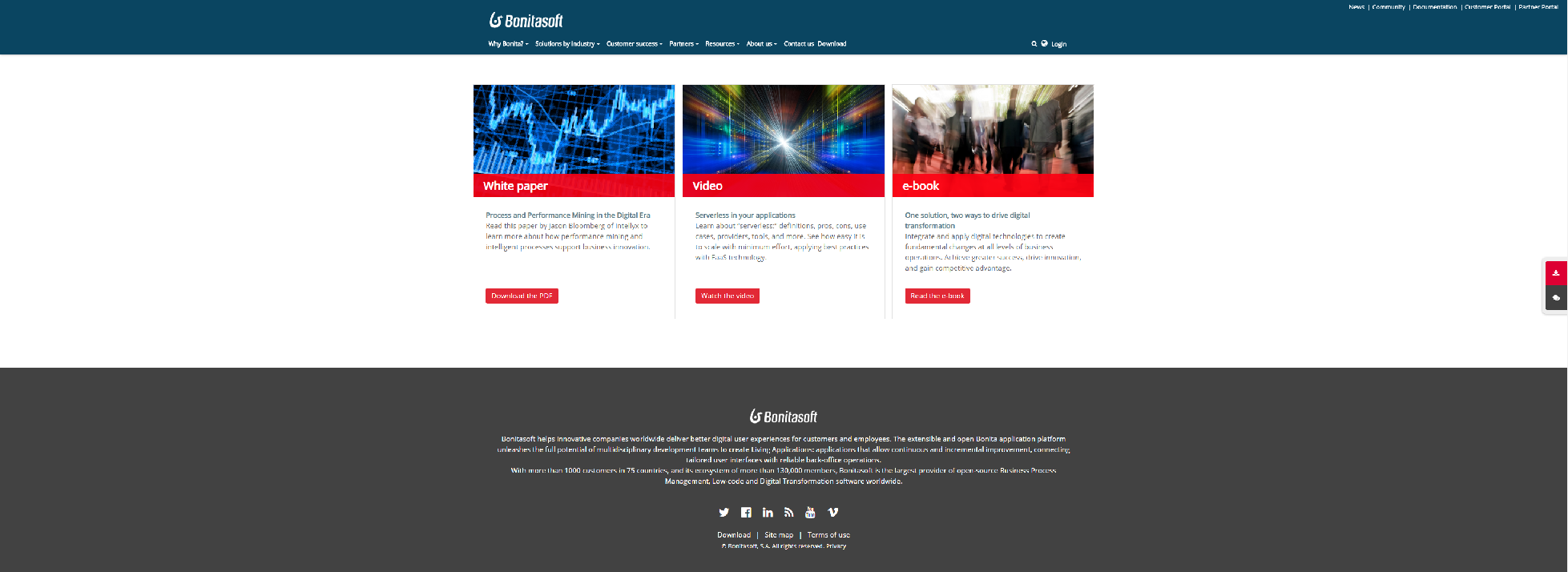
With the Bonita platform, you can build, run, monitor, and improve business apps that connect customized user interfaces with reliable back-office processes connected to your data and other business information systems to create engaging, satisfying end-to-end user experiences.
- Composition of intelligent process-centric applications
- Business innovation/continuous process improvements
- Business transformation
- Digitized process
- Citizen developer application composition
- Case management
AURAPORTAL
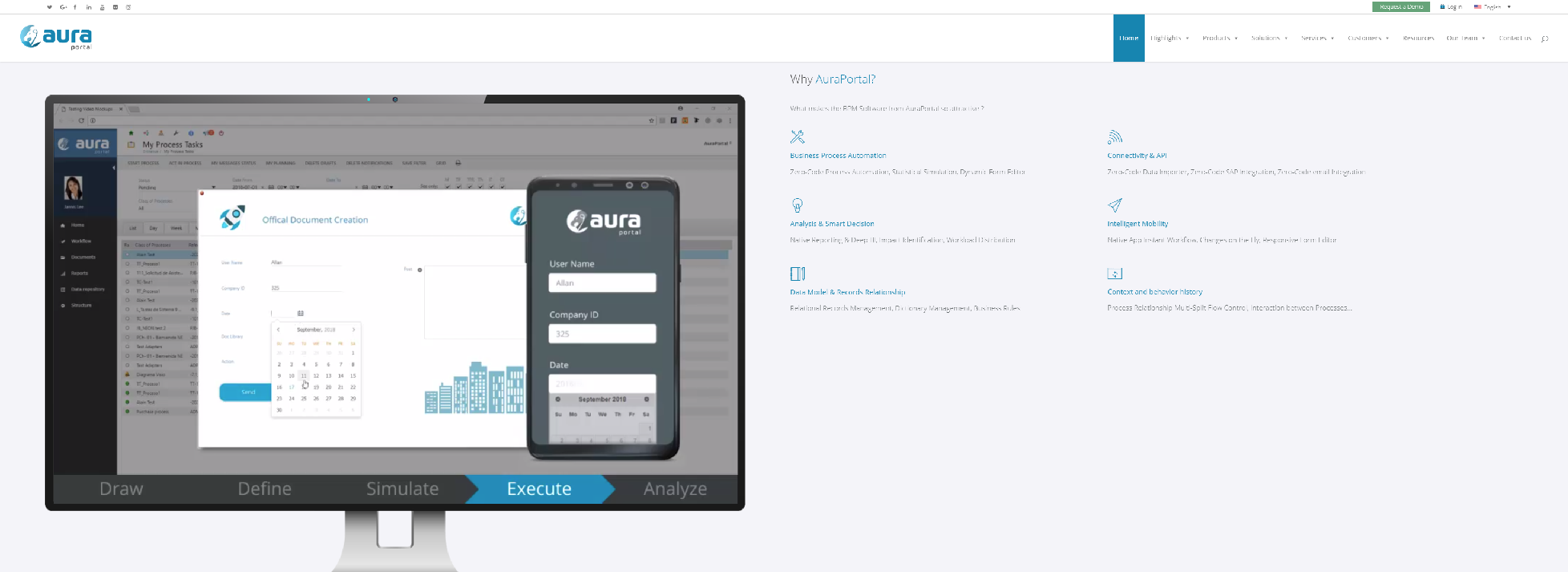
BPM Software (Business Process Management) with BPMN 2.0. Business Intelligence, Project Management, Document Management, Business Rules and more.
- Process Automation
- Dynamic Case Management
- User Interface (UI)
- Mobility
- Analysis & Smart Decision
- Document Management
- Business Rules & Data
- Artificial Intelligence (AI)
FLOWMINGO
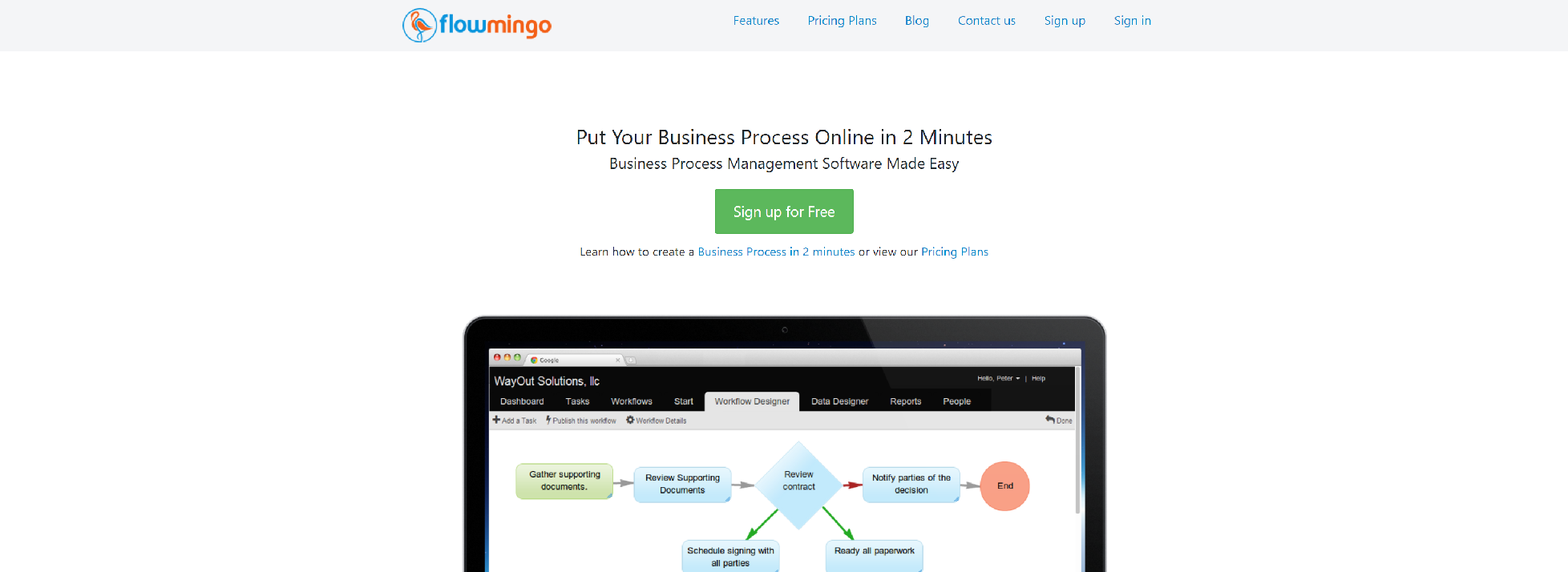
Business Process Management Software, Easy Workflow Software, Task Management Software, Easy BPM Software.
- Automation and Management
- Approval Processes
- Task Management
- Document Routing
- Contracts Review
- Invoice Approvals
- Quotes and Statement of Work Proposals
- Technical Specifications
- Legal or Regulatory Compliance Related Processes
- Order Fulfillment
- Human Resources
- Accounting
- Purchasing Requests
INTERFACING
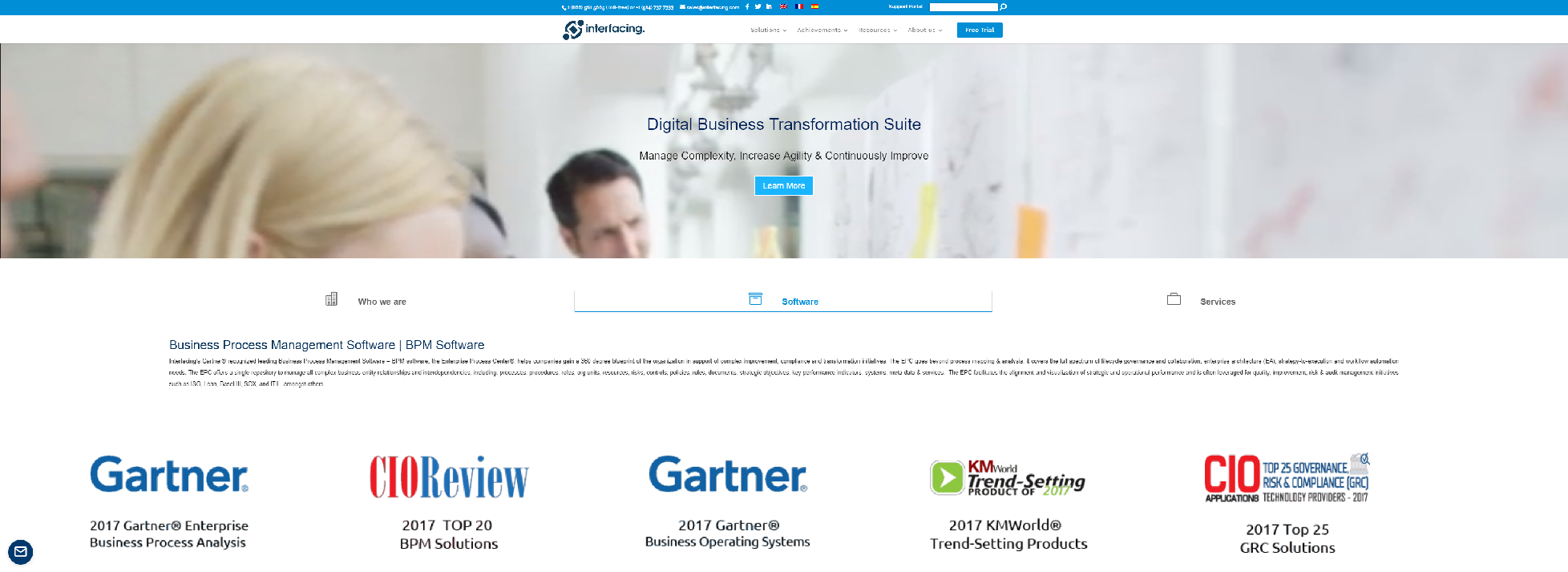
Business Process Management Software (BPM Software) for Quality Management, Continuous Improvement, Governance Risk Compliance and Process Automation!
- Modeling & Documentation
- Analysis & Improvement
- Collaboration & Governance
- Policies & Procedures
- Risk & Control
- Strategy & Performance
- Audit & Compliance
TIBCO
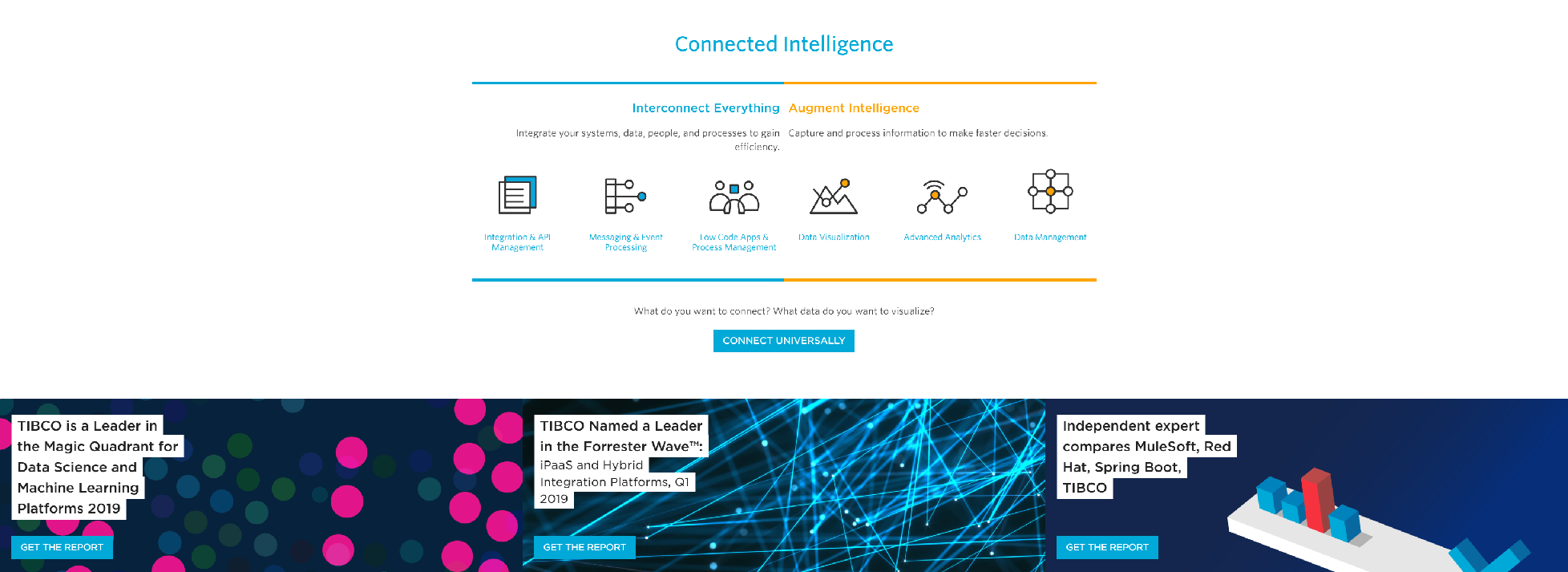
TIBCO Software is the leading independent provider of infrastructure software creating event-enabled enterprises to use on-premise or as part of cloud computing environments.
Benefits:
- Become faster and better
- Get the best information for the decision
- Optimize operations with processes prepared for rapid evolution
- Experiment to create innovative digital products and services
- Differentiate and delight customers
Capabilities:
- Process Automation
- Process Documentation
- Seamless Digital Experience
- Powerful Human Capital Management
- Process Patterns
- Predictive Operations Dashboard
PEGA
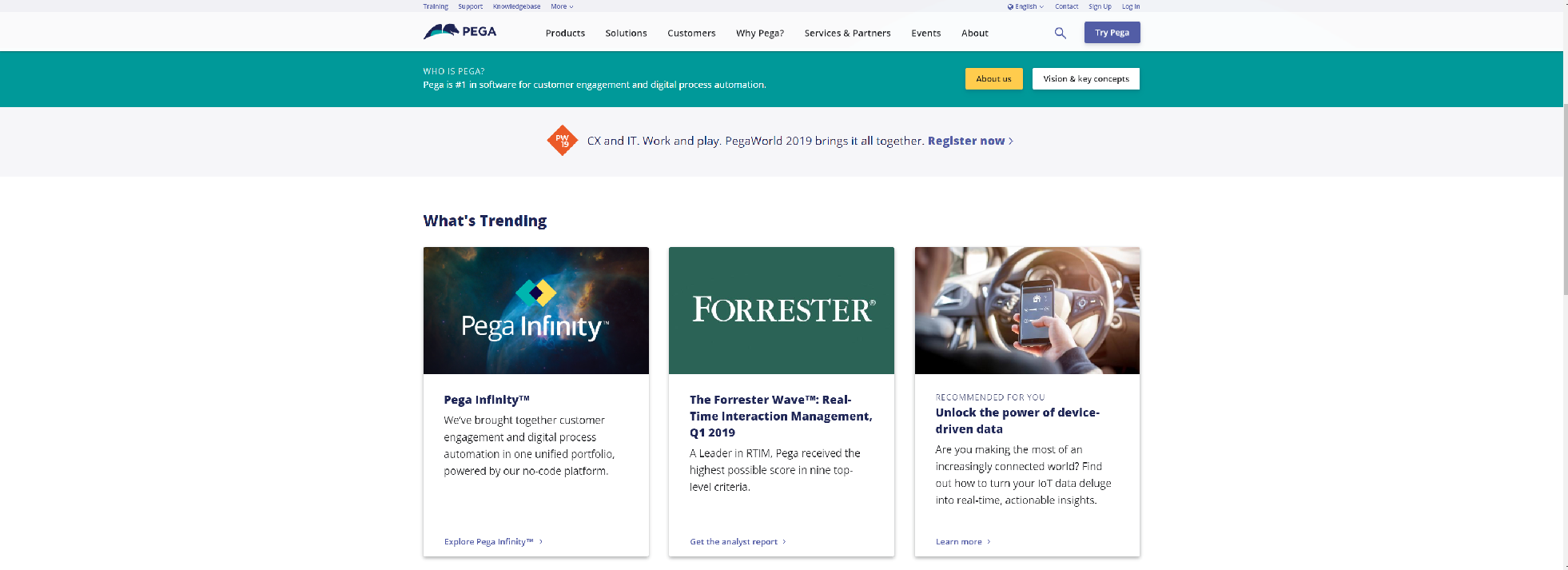
Explore business solutions from the leader in software for customer engagement and digital process automation, built on the unified Pega Platform.
Checklist:
- Process agility
- Rule capabilities
- Performance and scalability
- Time-to-value
- Industry leadership
PIPEF
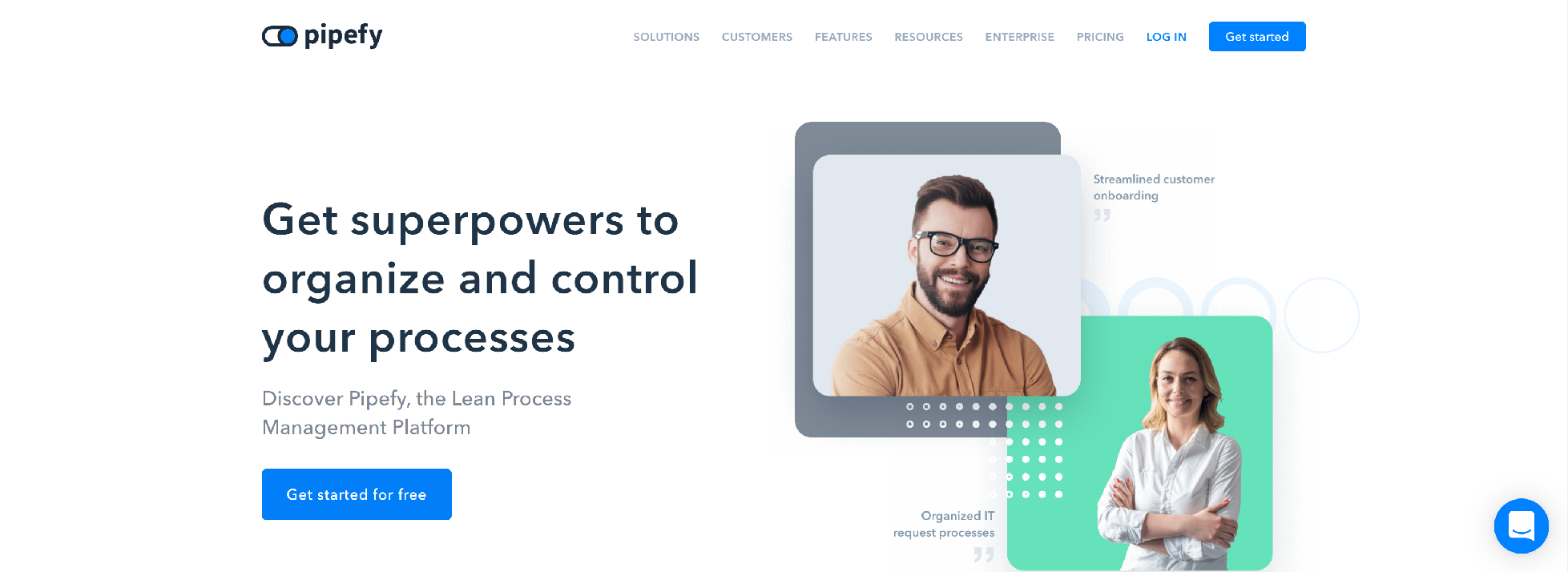
Deploy fast and manage processes within minutes using our no-code platform.
- Fast deploy
- Automate processes and integrate with RPA
- Approval flows
- Easy to customize
- Process templates
- Digitize unstructured data
Most Common Questions Regarding Business Process Management (BPM) Software
What is BPM software?
BPM software helps organizations design, execute, monitor, and optimize business processes. It provides tools to model processes, automate workflows, and analyze performance.
How can BPM software benefit my organization?
BPM software can improve efficiency, reduce costs, enhance visibility into processes, facilitate compliance, and improve customer satisfaction by streamlining workflows.
Is BPM software suitable for all types of businesses?
Yes, BPM software can be tailored to various industries and business sizes. Whether for small businesses or large enterprises, it can help optimize specific processes.
How does BPM software integrate with existing systems?
Most BPM solutions offer APIs and connectors that facilitate integration with other enterprise systems (like ERP, CRM, etc.) to streamline data flow and enhance functionality.
What is process modeling, and why is it important?
Process modeling is the visual representation of a business process. It helps organizations understand their workflows, identify inefficiencies, and communicate processes clearly.
How can BPM software help with compliance and risk management?
BPM software can enforce compliance by standardizing processes, tracking changes, and providing audit trails. It also allows organizations to identify and mitigate risks in workflows.
What is the difference between BPM and workflow automation?
BPM encompasses a broader scope, focusing on process management and optimization, while workflow automation specifically targets the automation of specific tasks within those processes.
How do I choose the right BPM software for my organization?
Consider factors like scalability, ease of use, integration capabilities, vendor support, and whether the features align with your specific business needs.
What are some common challenges when implementing BPM software?
Challenges can include resistance to change from employees, insufficient training, integration issues, and not having a clear strategy for process improvement.
How can I measure the success of BPM initiatives?
Success can be measured through key performance indicators (KPIs) such as process cycle time, error rates, cost savings, and overall employee and customer satisfaction.
What is the role of data analytics in BPM?
Data analytics allows organizations to monitor performance in real-time, identify trends, and make informed decisions to continuously improve processes.
Can BPM software be used in remote or hybrid work environments?
Yes, many BPM solutions are cloud-based, allowing for remote access and collaboration among distributed teams.
How often should processes be reviewed and updated?
Processes should be reviewed regularly, especially after significant changes in the business environment, to ensure they remain efficient and effective.
What trends are shaping the future of BPM software?
Trends include increased automation through AI and machine learning, enhanced user experience with low-code/no-code platforms, and a focus on continuous improvement and agility.